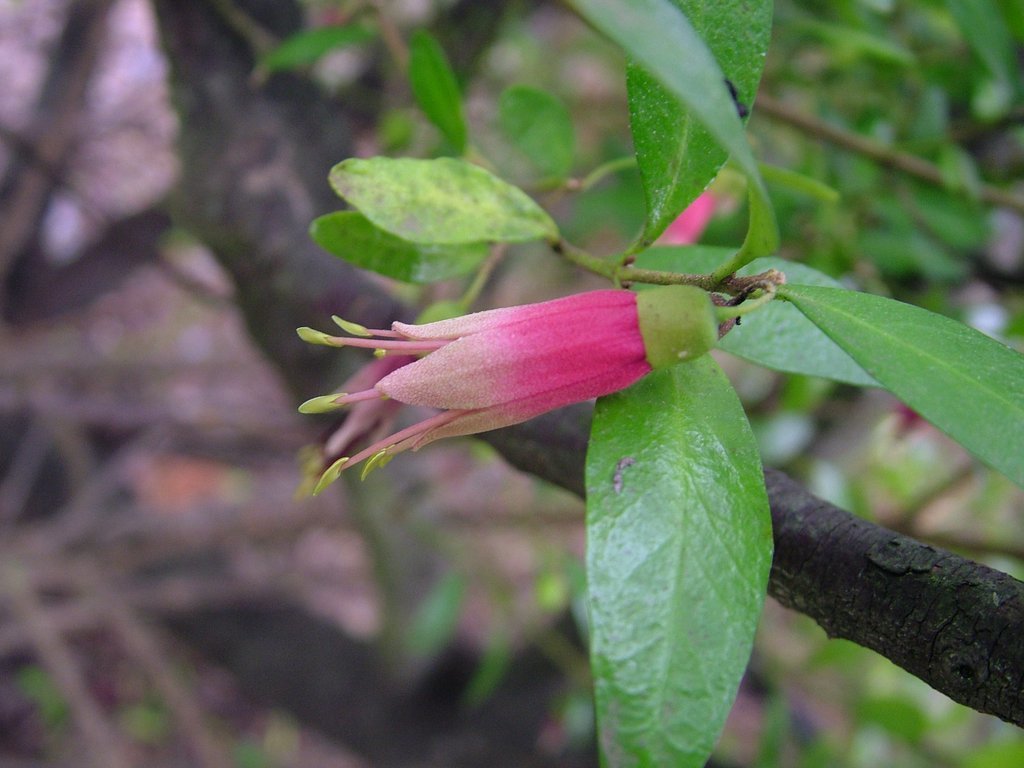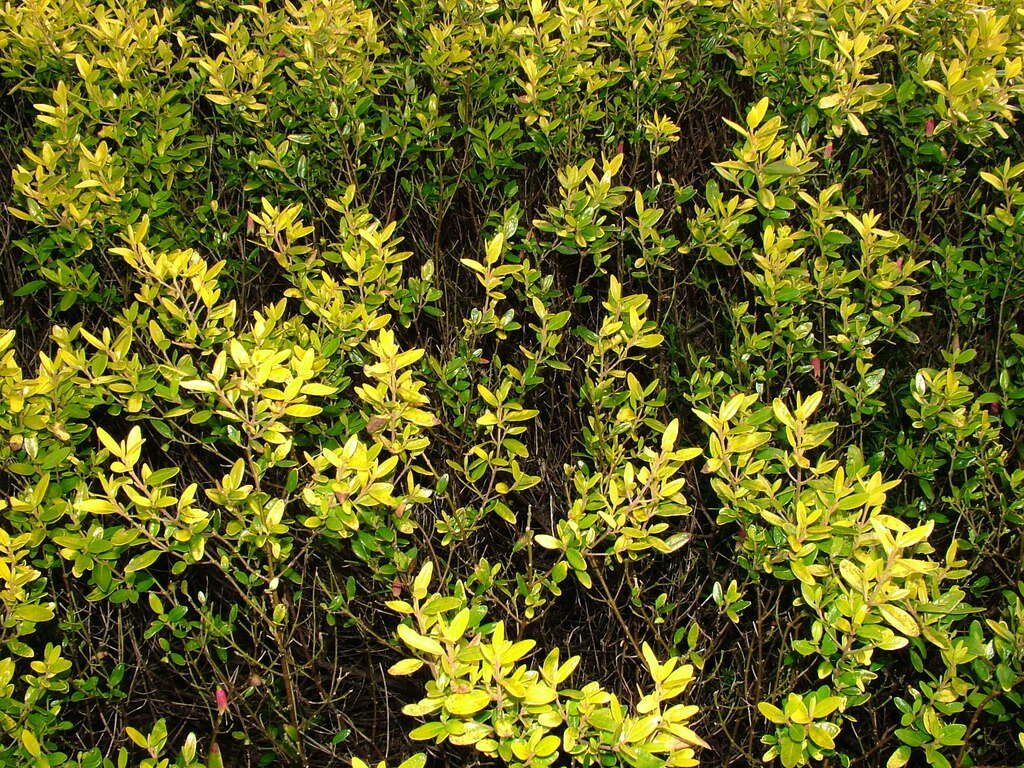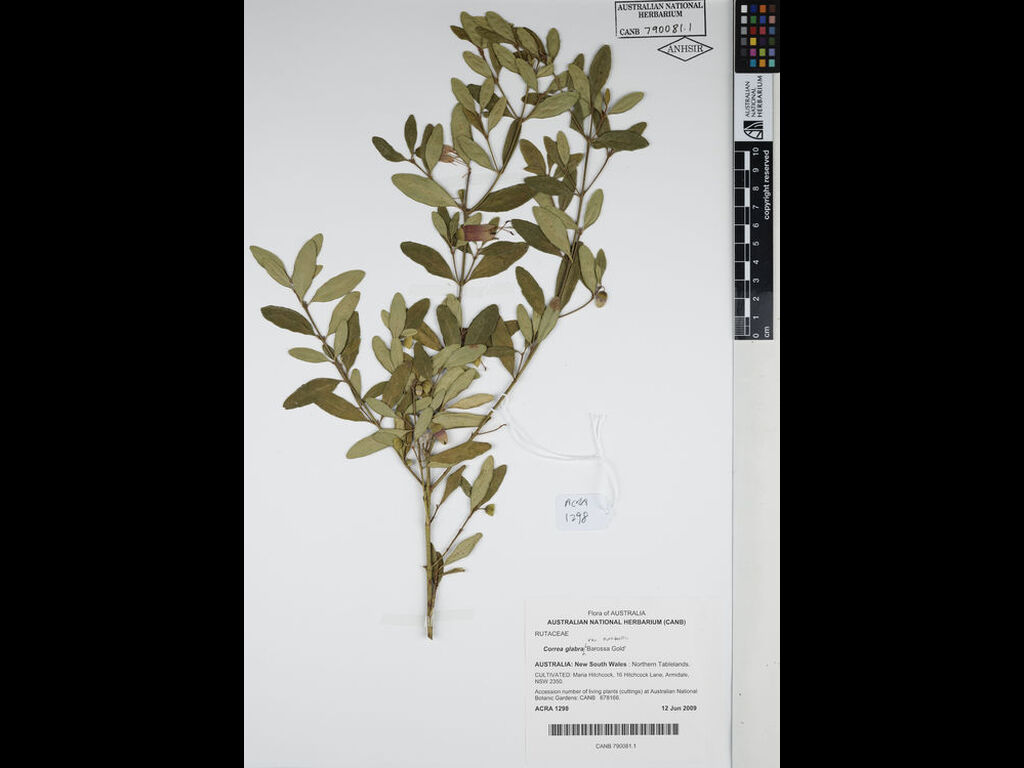Correa glabra var. turnbullii 'Barossa Gold'
- File Number
- 1298
- ACRA Field Book Number
- 1298
- Registration Date
- 28/01/2010
- Application Received
- 12/06/2009
- Family
- Rutaceae
- Cultivar Name
- Correa glabra var. turnbullii 'Barossa Gold'
- Origin
- Collected at Springton in the Barossa Valley, South Australia by David Widdop. Introduced by Wail Nursery, Dimboola, Victoria. Named and registered with ACRA by Maria Hitchcock for the Correa Study Group.
- Characteristics
- Upright dense shrub growing to 1.5 m x 1.5 m with glossy mid green foliage turning gold which makes this a highly ornamental plant. It is not a variegated form as the whole leaf turns gold when the variety is planted in the open. Leaves are elliptical, glabrous on both sides, glossy on top growing up to 45 mm x 18 mm with obtuse tips and on very short petioles. Leaves when crushed have a fruity smell. Flowers occur singly or in pairs on short 4 mm pedicels at the end of short lateral branchlets. The corolla is 24 mm long x 7 mm wide, crimson up to where the petal tips split then grading to a pale green on the tips which are barely recurved. The corolla bulges slightly just below the calyx. Stamens are strongly exerted. Petal tips and filaments become pink with age. Calyx is cup-shaped, green and glabrous, 4 mm x 5 mm in size. Peak flowering is from Autumn to Winter but flowering may be spasmodic throughout the year. Diagnosis: This variety differs from other forms of C. glabra var turnbullii in the golden foliage. It is the only form which has this variation.
- Cultivation
- C . ‘Barossa Gold’ is a highly ornamental shrub. It is both frost and drought hardy and adaptable to a wide variety of soil conditions. It is best grown out in the open where the plant will develop the golden foliage but it is just as attractive in the semi-shade where it develops a grading of colour variations. It would suit hedging as well as a shrub border and can be pruned lightly to maintain density. It is pest free and highly bird attractive.
- Publication
- Hitchcock, M. (2010), Correas: Australian Plants for Waterwise Gardens: 113
- Colour Coding
- RHS Colour Chart 1995: Flowers; Corolla 181A, 145C Mature leaves: 144A – 153C
- Propagation
- Cuttings from semi-firm new growth
- Applicant Name
- Maria Hitchcock for the Correa Study Group
- Uses
- As part of a mass planting or mixed in a shrubbery, or as a spectacular feature plant. Attracts nectar feeding birds.
- Availability
- Kuranga Nursery
- ANBG Accession Numbers
- -
- NSL ID
- -


